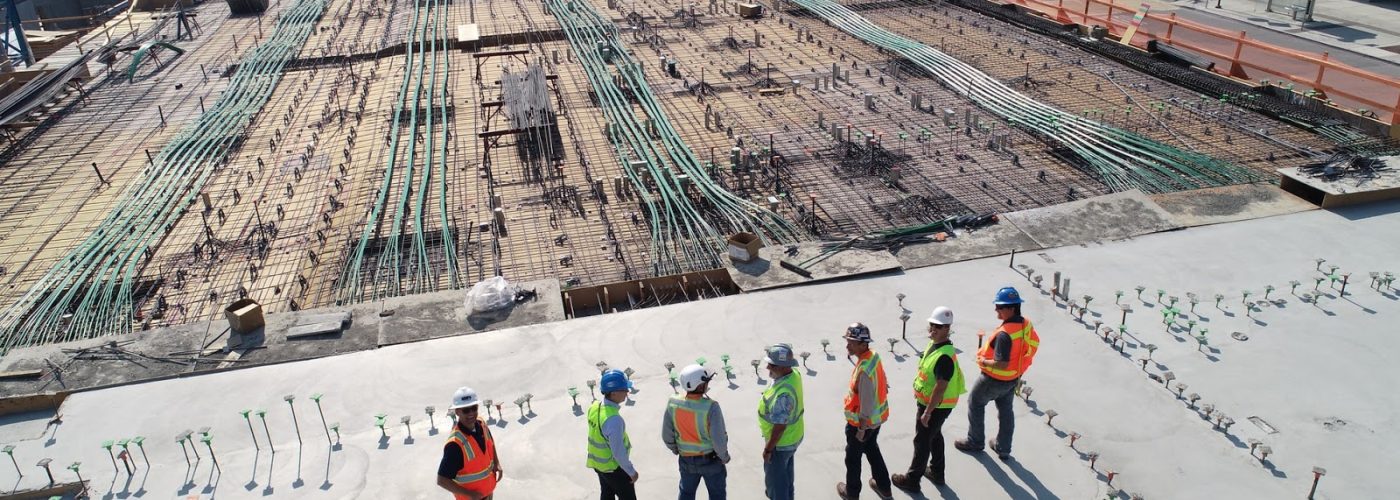No matter where you are in the world, you have likely been impacted somehow by the COVID-19 pandemic. Maybe you know someone who contracted it. Maybe it’s impacted your job or the career of someone you love.
While some parts of the globe are seeing yet another surge, there are certain industries that have to keep going in order to maintain some sense of normalcy. So far, the construction industry has been considered ‘essential’ in many different areas of the world. Things still need to get built. Deadlines and schedules need to be kept.
Unfortunately, one recent study in the U.S. has found that construction workers might be at a greater risk of developing COVID-19.
So, why the increased risk within the construction industry, and what can you do to keep your team safe?
Why Are Workers at Risk?
At the height of the pandemic, the BESA released new COVID-19 guidelines to keep engineering and construction firms safe. Like many other industries are discovering, however, no safety plan is foolproof.
One of the biggest reasons why construction workers remain at high risk is because the industry remained in demand throughout the pandemic. Again, many construction projects needed to keep going and workers were considered essential.
Whether a buyer needed a property report or actual building needed to be completed, the commercial real estate, construction, and design industries haven’t stopped. In many places across the globe, things have been so uncertain for so long that it has been hard to keep up with changes in rules, regulations, and policies.
Amidst that confusion, it has likely been easy for those in the construction field to make a few missteps in keeping themselves safe.
Close Confines on Construction Sites
If you work in the industry, or you’ve been on a job site before, it’s easy to think you’re safe from the threat of any virus, considering you spend the majority of your time outside. But, think about how close you can get throughout the day to your fellow workers. You might need to give them instructions or receive some from someone else. You may be touching the same tools and building materials as someone else.
Construction workers often go from job to job, too. That can easily increase the spread of the virus, even if just one worker is carrying it from site to site.
Simply put, there are plenty of ways in which the virus can be passed at a job site, which may also be contributing to the greater risk for those in construction.
What Can Be Done Now?
Thankfully, the precautions necessary to reduce the spread of COVID-19 haven’t changed much over the last few months. If you are in charge of a job site, you should make it your top priority to keep everyone safe. If you are a worker, it is your own responsibility to take precautions and keep yourself safe while doing what you can to reduce the spread to others.
The most important thing you can do is to make sure everyone on the site is practicing social distancing as much as possible. That may not always feel realistic when working on a job. But, if it means extending a deadline to keep your workers safe, that’s what needs to be done. Having fewer people on the site is a great place to start.
Additionally, anyone who is there should be wearing a mask at all times. This is one of the best and easiest ways to reduce the spread of COVID, and it’s a small price to pay for keeping everyone healthy.
Contract tracing should also be done among workers. If one employee is exposed to the virus, everyone needs to be made aware and the right procedures need to be put in place. That’s especially important for workers who go to different job sites to work.
Does that mean some of your workers will have to quarantine for a while? It’s likely. However, it’s better to be safe than sorry. Not putting these precautions in place could trigger an outbreak among your employees.
Information like this isn’t meant to scare anyone. The construction industry certainly isn’t the only one facing these ‘surges’ and rising case numbers. Almost any profession that requires people to work closely with one another is at a greater risk of spreading the virus. But, if the construction industry wants to stay afloat, guidelines need to be taken seriously and construction firms need to have their own sets of rules in place that are designed to keep everyone safe.





